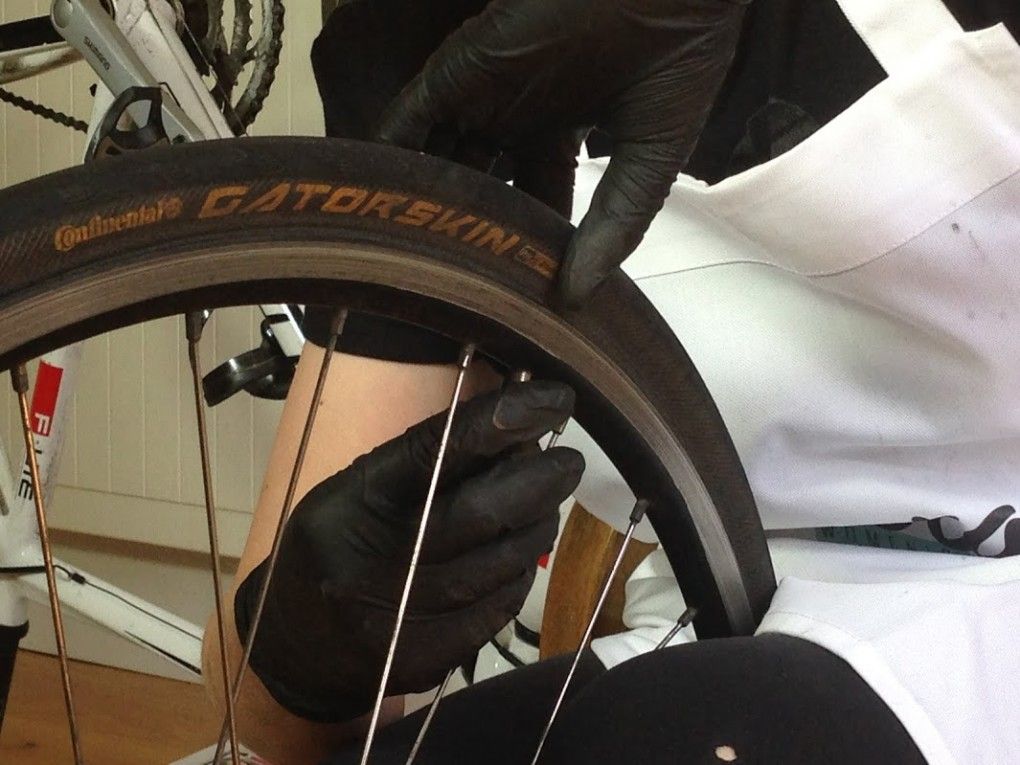As you can imagine, wheels are an essential component of a bike.
Not only do bike wheels allow us to roll smoothly while cycling, but they also provide dampening from lumps and bumps as well as providing traction to the surface we’re riding.
Many cyclists don’t understand how to measure a bicycle wheel, or how to measure a bike tire so I put together this bicycle wheel size guide to help you determine your current wheel size and what size bike tires you need for your wheels.
Riding with wheels that are too big or small can cause damage to your bike, so pay attention to the steps below, and you won’t have any issues!
Ready to learn how to measure a bike wheel? Let’s hit the road.
Add a header to begin generating the table of contents
Based on how much time you want to allocate to measuring your bike wheel, you can take a few different approaches.
You could attempt first to contact the manufacturer or the shop where you purchased your bike. Retailers and manufacturers have a record of all measurements and sizing information.
But be warned, retailers can be a nightmare to get hold of and often take a long time to reply.
If you have a bike tire on your wheel, you can generally find required measurement information on the tire wall (side of tire – see picture below).
Tire walls usually display the size as determined by the European Tire and Rim Technical Organization, or ETRTO and will look something like the picture below.
Bike tire wall size pictureIf you can’t find the sizing on the wall of your tire, don’t panic. Below you’ll find several methods to help you understand how to measure your bike wheel.
Alongside understanding more about your bicycle’s rim, a few of the methods below will also help you determine which tire size your wheel needs.
These steps are beneficial in those cases where you do not have a bike tire or have custom wheels, as the measurements you seek may not be readily available to you.
Typically there are two main approaches for how to measure bicycle wheel size.
Just before we begin, if your wheel doesn’t have a tire fitted, click here to move on to the next step.
The quickest way to determine your bike wheel size is the standard method.
The standard method measures the tire width and tire diameter in inches.
Let’s start with a step by step guide on completing the standard method of bike wheel measuring:
Bike Wheel RadiusBike Tire Width
The most accurate way to measure bike tire size is through the ISO method.
ISO stands for the International Organization for Standardization, a measuring system that uses millimetres to gain the most accurate sizing possible for a bike tire.
Using this method, one measures the width of the tire and the inner diameter, or bead seat diameter.
Towards the end of the article, you’ll find a chart allowing you to compare the different ISO wheel sizes and what types of bike or vehicle each size of wheel is used with. Click here to view the chart.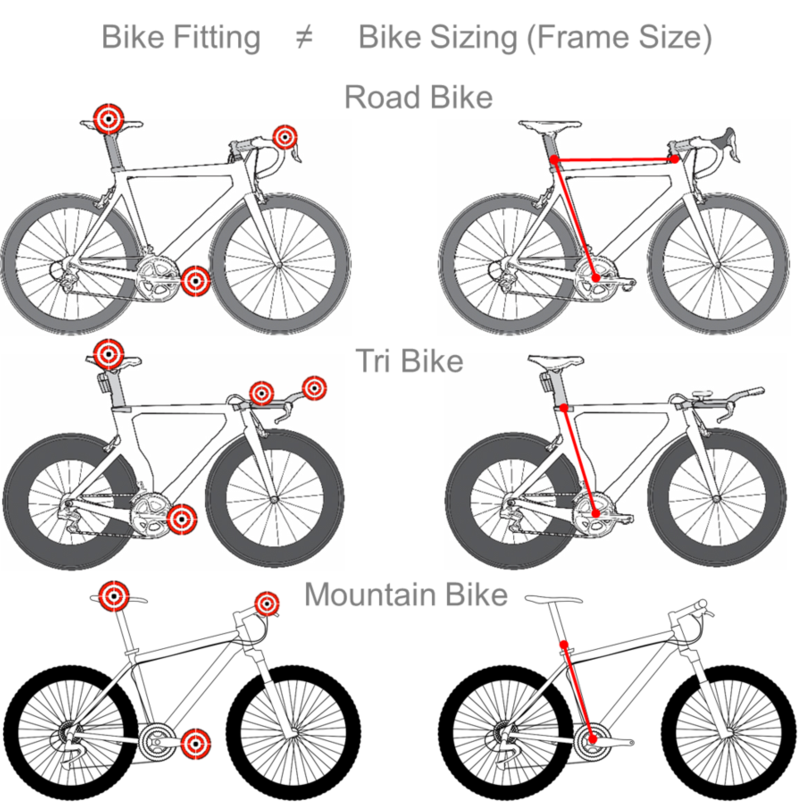
Here is a step by step guide on how to measure a bike tire using the ISO standardization method.

If you do not have your bike’s tire to hand, you can determine the tire size by measuring your bike’s rim width in millimetres as well.
Based on the average tire and wheel combinations currently on the market, the following charts illustrate the coinciding tire size and rim length.
This bike wheel has an ISO 622mm with an internal bead seat width of 15mm. Not all wheels will display their measurments!Many rims will display their size somewhere, but some rims may be missing this measurement.
If you cant find. measurement on your wheel’s rim, follow the easy steps below that will help you determine the appropriate tire sizes your rim can handle.
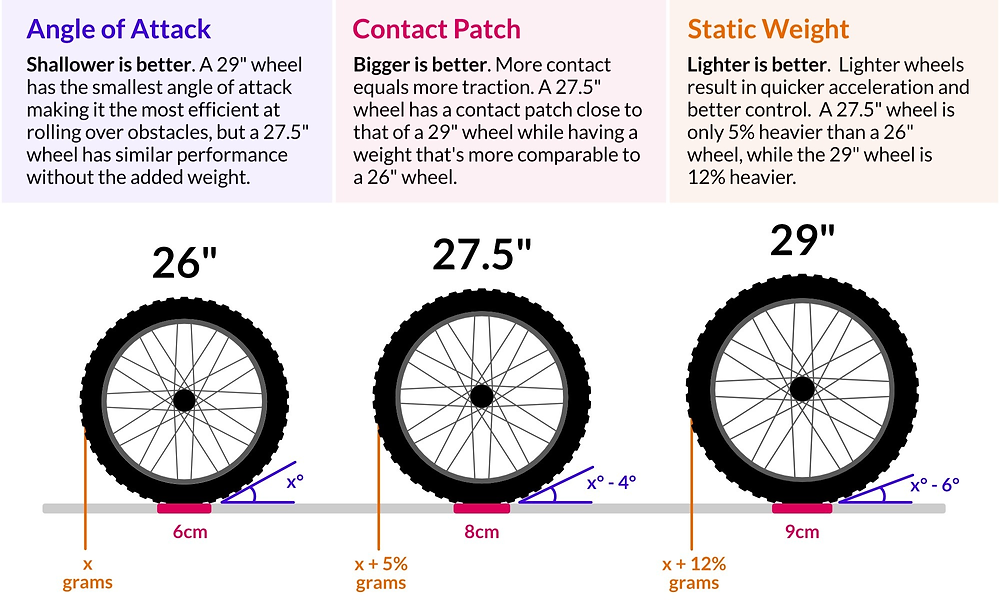
It’s important to note that these charts are based on average measurements; therefore, if possible it’s a good idea to double-check with your wheel’s manufacturer or retailer to confirm all compatible tire sizes.
It’s also important to consider the tire clearance on your fork and rear triangle. If you choose a tire that’s too wide you can end up damaging your frame and a tire that’s too thin can easily cause damage to your rim and inner tube.
| Tire Size Compatibility | Internal Rim Width |
|---|---|
| 23 - 25c | 13-15, 17-19mm |
| 25 - 28c | 13-15, 17-19, 20-21, 22-23mm |
| 30 - 33c | 17-19, 20-21, 22-23, 24-25mm |
| 33 - 35c | 17-19, 20-21, 22-23, 24-25mm |
| 38 - 40c | 20-21, 22-23, 24-25mm |
| 40 - 43c | 20-21, 22-23, 24-25mm |
| 43 - 45c | 22-23, 24-25mm |
| 45 - 48c | 22-23, 24-25mm |
| 48 - 50c | 24-25mm |
| Tire Size Compatibility | Internal Rim Width |
|---|---|
1. 9" Tires 9" Tires | 19-23mm |
| 2.0" Tires | 19-24mm |
| 2.1" Tires | 19-28mm |
| 2.2" Tires | 20-30mm |
| 2.3" Tires | 21-33mm |
| 2.4" Tires | 23-34mm |
| 2.5-2.7" Tires | 25-35mm |
| 2.8-3.1" (plus) Tires | 22-23, 24-25mm |
The process of measuring a kid’s bike wheel and tire size follows similar steps to those shown above, but kid’s bike tires are measured in inches and are understandably smaller than those of an adult bike.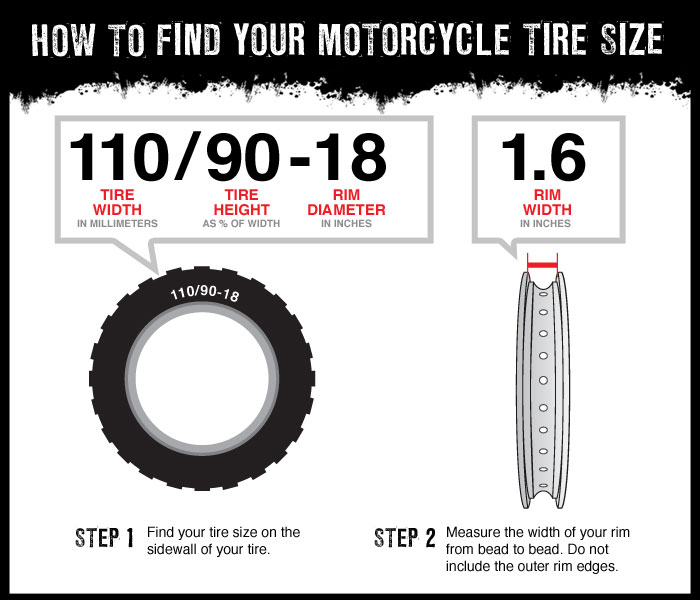
I’ve put together a simple guide for everything to do with kid’s bike sizing.
If you’re looking to measure the wheels on a kid’s bike, or are looking to determine which size bike is best for your kid, have a read of this guide, which includes all of the bike and wheel size charts you’ll need!
Follow the steps within this guide closely, as a poor fitting kids bike can put you child off cycling for good.
Measuring your wheel’s circumference for a bike computer is an important task that will determine the accuracy of the data your computer provides.
To simplify the steps required to measure your wheel’s circumference for a cyclometer, I’ve put together a simple bike wheel circumference guide.
These three simple methods will help you accurately measure your wheel’s circumference.
You won’t need any specialist equipment, apart from a measuring tape.
This may look interesting, but it's one of the easiest ways to measure the circumference of a bike wheel for a bicycle computer!Each type of road bike and mountain bike comes with a different set of average wheel sizes.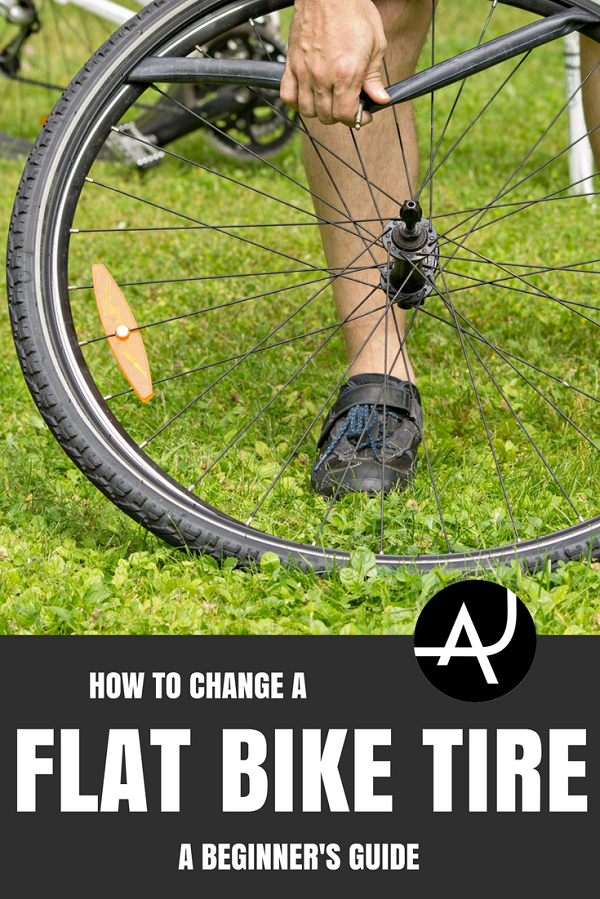 In general, each of these sizes offer a unique set of benefits and drawbacks.
In general, each of these sizes offer a unique set of benefits and drawbacks.
The most common size wheel for a road bike is 700c, and has been the standard size for a number of years.
The 700 refers to the wheel’s diameter of 700 mm, while the “c” is an old French width code for tires.
With “a” characterized as the most narrow width and “d” at the widest, “c” refers to a generally wider size.
Mountain bike wheels come in three main sizes: 26 inches/559 wheels, 27.5 inches/650b wheels, and 29 inches/622 wheels.
The smaller, 26-inch mountain bike wheels were once considered standard size and are more lightweight and agile than larger sized wheels.
Despite their popularity in the past, 26-inch wheels are no longer the standard, as larger wheels have a better grip, traction, and durability and have therefore become more popular.
Both the 27.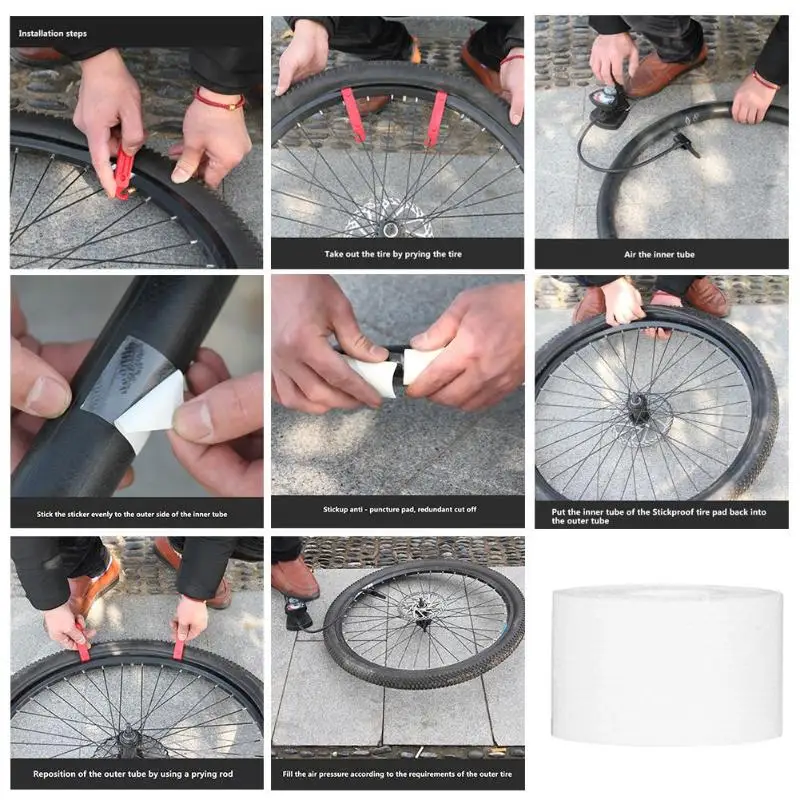 5-inch and 29-inch wheels offer a smoother and more controlled ride while sacrificing some of the acceleration capabilities of a 26-incher.
5-inch and 29-inch wheels offer a smoother and more controlled ride while sacrificing some of the acceleration capabilities of a 26-incher.
ISO otherwise known as the International Organization for Standardization developed the ISO wheel size system, which is universal and simplifies the once confusing task of finding the right size wheel for your bike.
The ISO standardization system uses two different numbers, that can often be found printed on the tire or rim walls.
The second number displayed in ISO tire size is the important one and represents the wheel’s bead seat diameter (as shown in the ISO size chart below).
If your wheel rim or tire has no size markings, you can use this ISO wheel size chart after measuring your wheels, to cross-reference and understand more about the size of your bike’s wheels.
| ISO Bead Seat Diameter | Traditional Sizings | Applications | |
|---|---|---|---|
| 137mm | 5.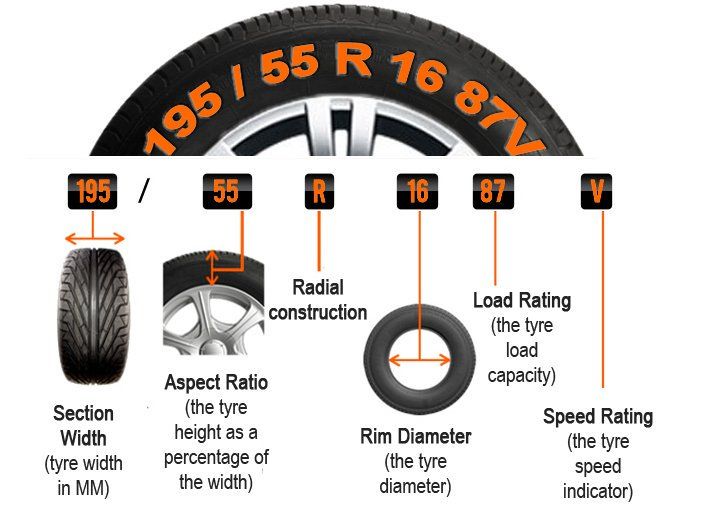 4" 4" | 8 x 11/4 | Wheelchairs |
| 152mm | 6" | 10 x 2 | Wheelchairs |
| 203mm | 8" | 12 1/2 x various | Scooters (children's) |
| 254mm | 10" | 14 x 2.00 | Various (children's) |
| 305mm | 12" | 16 x 1.75 - 16 x 2.125 | Folding bikes, some recumbents |
| 317mm | 12. 5" 5" | 16 x 1 3/4 | Schwinn (children's) |
| 337mm | 13.25" | 16 x 1 3/8 | Very rare bike tire |
| 340mm | 13.4" | 400 A | Folding bikes, European bikes (children's) |
| 349mm | 13.75" | 16 x 1 3/8 | Folding bikes, recumbents, bikes (children's) |
| 355mm | 14" | 18 x 1.5 - x 2.125 | Folding bikes, bikes (childrens) |
| 369mm | 14. 5" 5" | 17 x 1 1/4 | Moulton bikes |
| 390mm | 15.35" | 450 A | European bikes ( children's) |
| 406mm | 16" | 20 x 1.5 - x 2.125 | BMX, bikes (children's), folding bikes, recumbents |
| 419mm | 16.5" | 20 x 1 3/4 | Schwinn (children's) |
| 440mm | 17.3" | 500A | European bikes (children's), folding bikes |
| 451mm | 17.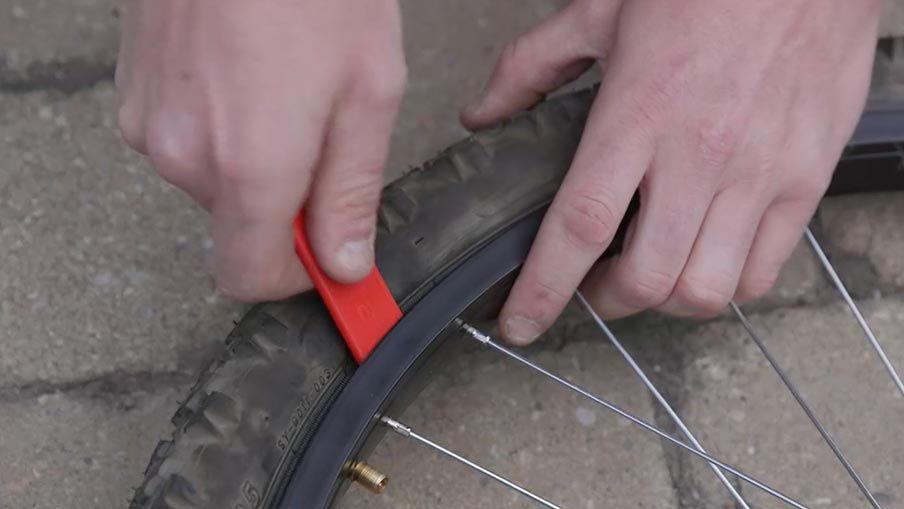 75" 75" | 20 x 1 1/8; x 1 1/4; x 1 3/8 | Bikes (children's), BMX, recumbents, folding bikes |
| 457mm | 18" | 22 x 1.75; x 2.125 | Bikes (children's) |
| 490mm | 19.3" | 550 A | European road bikes (children's) |
| 501mm | 19.75" | 22 x 1 3/8, 22 x 1.00 | British bikes (children's) |
| 507mm | 20" | 24 x 1.5- x 2.125 | Mountain bikes (children's), cruisers |
| 520mm | 20. 5" 5" | 24 x 1, 24 x 1 1/8, 24 x 1 3/4 | Schwinn bikes |
| 540mm | 21.25" | 24 x 1 1/8, 24 x 1 3/8 (E.5), | British bikes (children's), wheelchairs, Japanese women's bikes |
| 547mm | 21.5" | 24 x 1 1/4, 24 x 1 3/8 (S-5) | British bikes (children's), Schwinn bikes (children's) |
| 559mm | 22" | 26 x 1.00- x 2.125, fatbike tires up to 5 inches wide | Mountain bikes, cruisers, fatbikes, Schwinn bikes |
| 571mm | 22.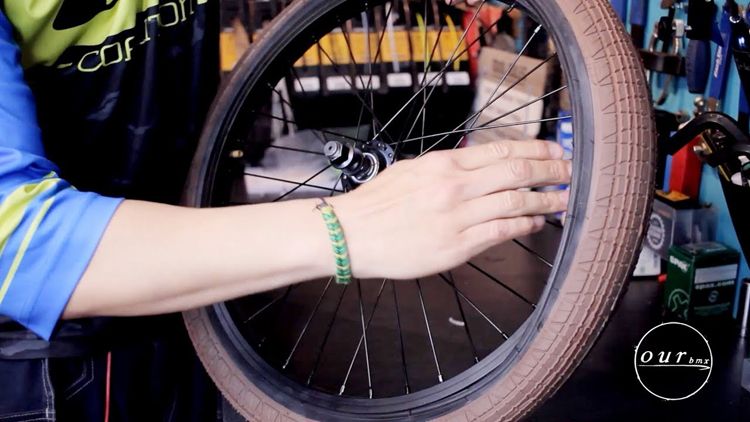 5" 5" | 26 x 1, 26 x 1 3/4, 650 C | Cannondale bikes, wheels for shorter cyclists, Schwinn bikes |
| 583mm | 22.95" | 700 D | GT bikes |
| 584mm | 23" | 650B, 26 x 1 1/2, 27.5 | French bikes, tandem and touring bikes, Raleigh & Schwinn mountain bikes |
| 590mm | 23.25" | 26 x 1 3/8 (E.A.3), 650 A | French & Italian bikes, English 3 speed bikes |
| 597mm | 23. 5" 5" | 26 x 1 1/4, 26 x 1 3/8 (S-6) | British bikes, Schwinn bikes |
| 599mm | 23.6" | 26 x 1.25, x 1.375 | Old US bikes |
| 622mm | 24.5" | 700 C, 28 x 1 5/8 x 1 1/2, 29 inch, 28 x 1 1/2 F.13 | All bike types, Canadian bikes (F.13), |
| 630mm | 24.8" | 27 x anything (not 27.5), 609mm | Rare Danish bikes, old road bikes |
| 635mm | 25" | 28 x 1 1/2, 700 B, 28 x 1 5/8 x 1 1/2 | European roadsters, old Swedish bikes |
| 686mm | 27" | 32 inch | Unicycles, Custom bikes |
| 787mm | 31" | 36 inch | Unicycles, Custom bikes |
How do you remove a bike wheel?
The process of removing a bike wheel varies based on whether you wish to remove the front or back wheel.
Remove the front wheel by releasing the brake, flipping the bike over, opening its quick-release or unscrewing the wheel nuts, and pulling it off the fork.
Remove the back wheel by shifting the chain down onto the smallest cog, opening the break, loosening your quick release or wheel nuts, then pull the rear derailleur back and remove the wheel at the same time.
Are bike wheels universal?
Bike wheels are not universal.
As bikes come in many different sizes, you’re limited with what size wheels you can use with a bike.
Usually, you’ll be able to make minor adjustments to the size of your wheels or tires, but wheels that are too big or small can easily damage your bicycle.
Can you put a road bike wheel on a mountain bike?
Putting road bike wheels on a mountain bike frame can be done and is a popular option for many commuters who cycle to work in the city but switch back to MTB wheels to hit the trails.
Just remember, as the designs of road and mountain bike wheels vary drastically, you’ll probably need to make adjustments elsewhere on your bike!
But yes, putting road bike wheels on a mountain bike is entirely possible!
Can you put a mountain bike wheel on a road bike?
For improved aerodynamics, the frame of a road bike is typically narrower and offers less wheel clearance than a mountain bike.
Due to the reduced wheel clearance road bikes typically offer, the wider tires and wheels that accompany a mountain bike are not usually compatible with road bike frames.
That being said, some slimmer 29-inch mountain bike wheels with narrow ties may fit on a road bike that takes 700c wheels.
However, cycling with wheels that are too big can end up causing damage to your bicycle.
If in doubt, don’t risk it.
I hope you found the content within this short article helpful. You should now understand exactly how to measure a bike wheel and how to measure a bike rim for a tire.
If I’ve left any of your questions unanswered, leave me a comment down below and I’ll get back to you straight away.
As always, make sure to use a good quality bike lock to secure your bike, when leaving it unattended.
If you’ve been wondering which size bike frame fits you best, have a read of this short guide, which will help you select the most suitable bike size in a few quick steps.
Lock it or lose it.
Ciao for now.
Bike tire sizing is one of the most ignored aspects among casual riders.
Most riders just kind of go along with whatever comes with their bike, or leave things up to their local bike shop whenever it's time for a replacement or upgrade.
Things can get a little tricky if you're doing things on your own, however. If you're someone who plans on shopping online for new tires, or if you're considering changing sizes, it's obviously a requirement to know what the sizes are in the first place.
Almost every tire has the size printed on the outside, but these numbers can wear off over time, so if you don't have your sizes memorized, you may be in trouble if you don't know how to measure.
Measuring a tire is actually much easier than you think, and there are quite a few different ways to do it.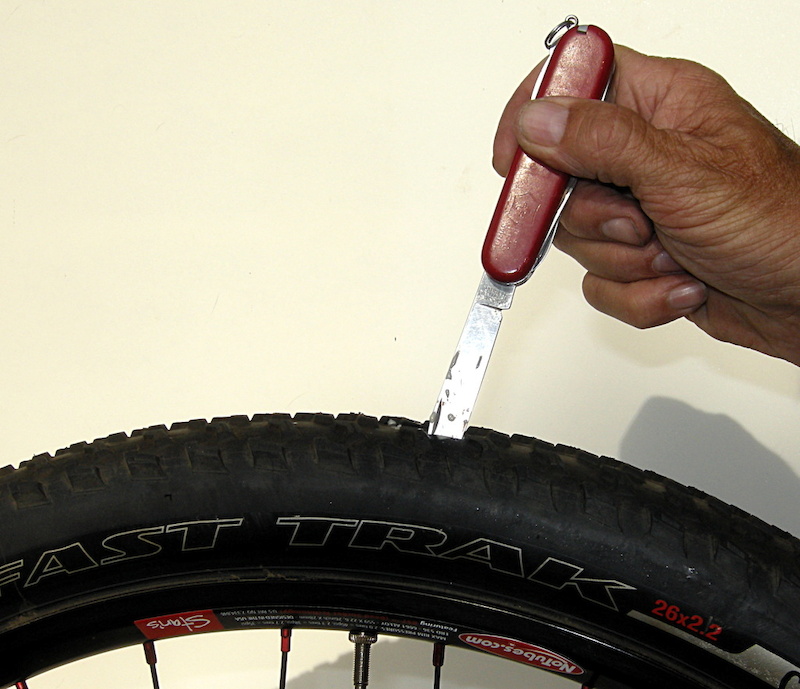 This post will walk you through a common method.
This post will walk you through a common method.
Before measuring, it’s good to know what the numbers indicate in the first place. Bicycle tire measurements have two different parts.
The larger number is the tire diameter, while the smaller number is the tire width. This is commonly done using inches, although millimeters can be used as well.
Different bike types use vastly different sizes. Most tire diameters generally fall between 12 to 26 inches, with tire widths normally ranging from 1.75 to 2.215 inches.
Ok, onto the actual measuring.
Lean the bike against a wall or use the kickstand to keep it upright. You can measure the bike wheel without the bike tipping over you if the bicycle is upright.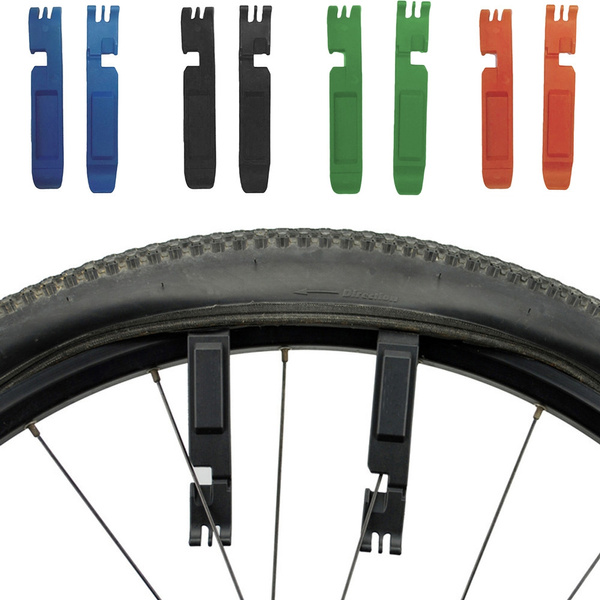 If you're measuring the bike by yourself, a retractable metal tape measure is of more durability than a plastic tape measure while still allowing you to use your other hand.
If you're measuring the bike by yourself, a retractable metal tape measure is of more durability than a plastic tape measure while still allowing you to use your other hand.
Measure the distance in inches between the ground beneath the tire and the wheel's center point. The wheel's radius, or half of its diameter, is this measurement. To get the tire's diameter, multiply the length by two. Most adult bicycle wheels are between 26 and 29 inches in diameter except for BMX cycles or mountain bikes.
From one side to the other, measure the flat section of the tire across the tread. The breadth of the tire is the distance. It varies widely depending on the intended application of the tire. The rougher the expected terrain, the broader the tread, while narrower tracks guarantee a smoother, faster ride.
Place the diameter first, followed by the breadth.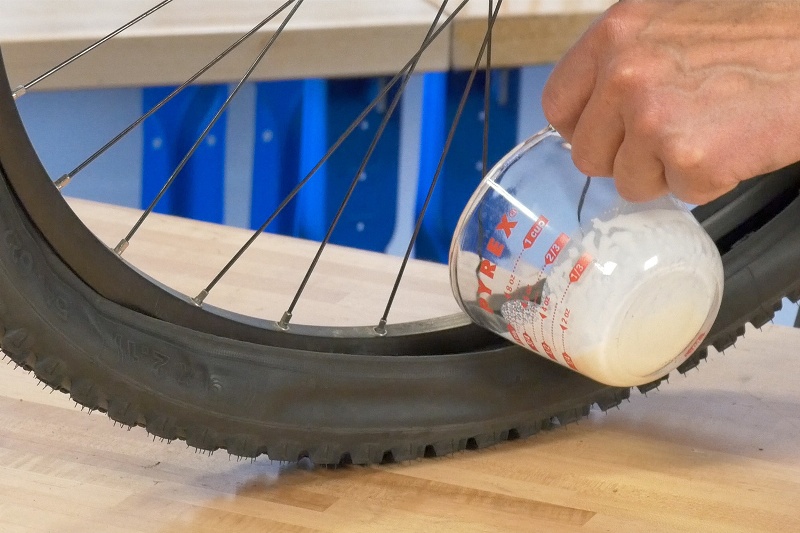 When buying a new tire, remember that traditional or standard sizes put the diameter first, then the breadth.
When buying a new tire, remember that traditional or standard sizes put the diameter first, then the breadth.
Check to see if the ISO standard is used to measure the wheels on your bike. Millimeters are used by the International Organization for Standardization (ISO) to measure the diameter of your bicycle's wheel.
The most reliable method for measuring your tires at home is ISO sizing. It should provide you with the most precise measurement.
The standard and ISO methods are used to measure the majority of tires. Their sizes should also be printed on the tire's sidewall so that you can quickly inspect them.
Make sure the bike is parked against a wall or on its kickstand. Measure in millimeters from the wheel's center to the tire's inner edge only. To find the diameter, multiply the figure by two.
The ISO standard comprises both the bead seat diameter (BSD) and the tire width in millimeters.
In millimeters, measure the breadth of the tire. Using the same procedure as before, go from one side to the other. Remember that different width tires can be used on the same bicycle wheel as long as the difference isn't too great.
Take a circumferential measurement. The circumference of a bicycle wheel is the distance around the outside of the wheel that you need to calibrate a bicycle speedometer, odometer, GPS, or computer appropriately. Bicycle equipment must be configured based on the size of your tires, much as your car's speedometer and odometer will offer false data if you change the size of its wheels. You'll need to determine the circumference of the wheel whether you've recently acquired a cyclometer or need to calibrate an existing one since you've moved to tires with a different thread size.
To get the circumference, multiply the tire's diameter by pi that is 3.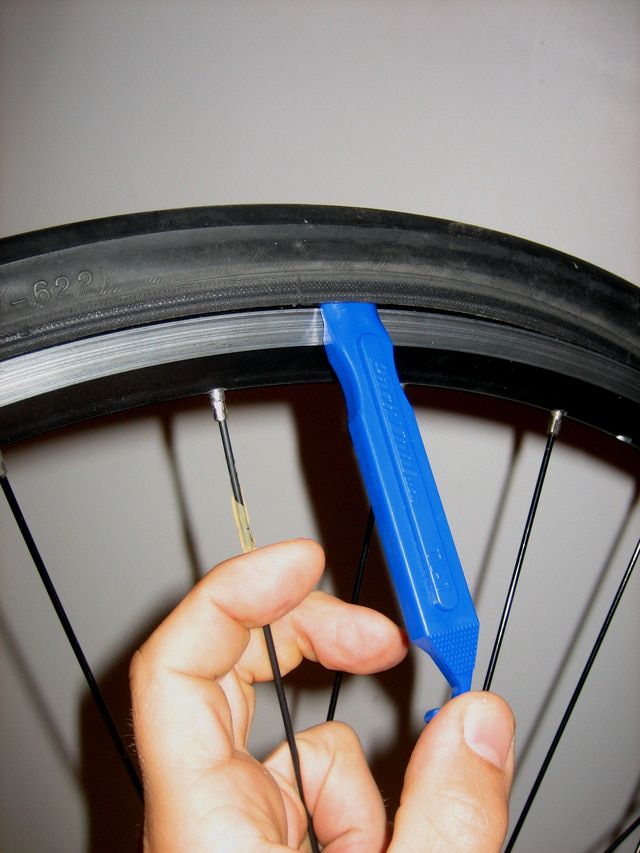 14. If you already know the tire's diameter from one side to the other, you can calculate the circumference of any circle rapidly.
14. If you already know the tire's diameter from one side to the other, you can calculate the circumference of any circle rapidly.
If you already know the diameter and breadth of the tire, you can use one of several online calculators to calculate the circumference.
Using a string, measure the circumference. If you don't know the diameter of the wheel, you can still estimate its circumference by looping a rope evenly around the tire's outside edge. To determine the circumference, mark or cut the thread to reach back to its beginning place and measure its length.
Apply a dot of wet paint to the tread of a bicycle tire. Push the bike in a straight line for at least two spins, ensuring that the color is on the ground twice. To estimate the tire's circumference, measure the ground from one paint spot to the next.
The specifications manual that came with the bike will most likely have your wheel sizes listed.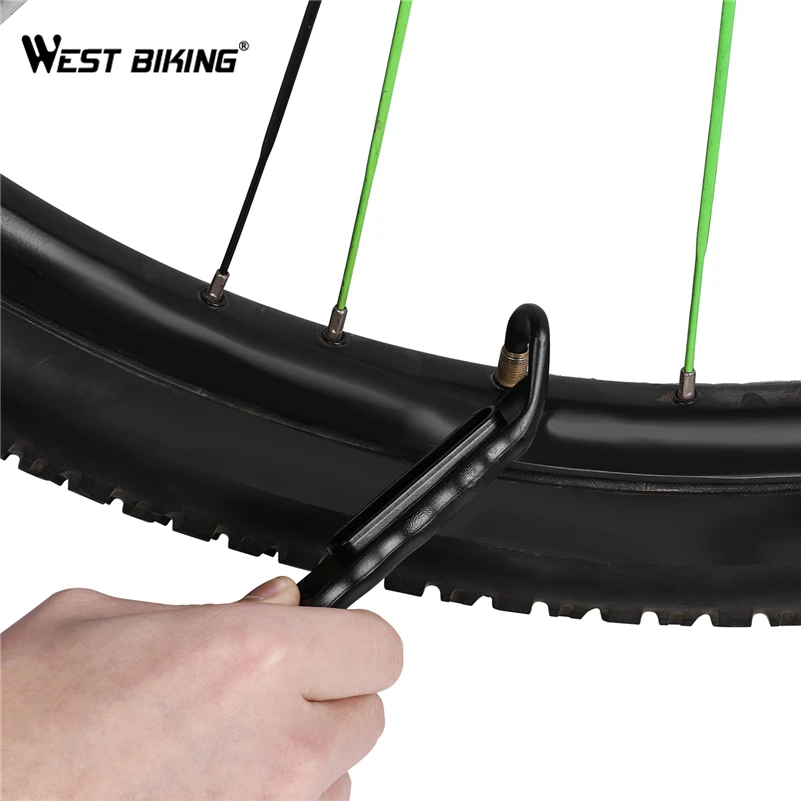 If this is not the case, contact the bike store where you purchased your bike and they will be able to assist you.
If this is not the case, contact the bike store where you purchased your bike and they will be able to assist you.
Alternatively, go to the retailer's website and look up the bike's specifications. The wheel size should be listed in the specs section.
Stand the bike up using a kickstand, or just lean it against a wall.
Place a tape measure against the center of the bicycle wheel, and then extend the tape in a straight line towards the tire’s outer edge.
If you’re using traditional sizing, all you need to do is double the length that you just measured, and you have the diameter.
Easy, right?
(Keep in mind that tire diameters are almost always whole numbers. So, if your measurement comes out to something like 25.8, the actual diameter is really just 26 inches.)
Measuring width is just as easy. Take your tape measure, and place it on flat surface across the tire's tread going from one side to the other side.
Take your tape measure, and place it on flat surface across the tire's tread going from one side to the other side.
Now all that’s left to do is to combine the measurements. Standard bike tire sizes place the diameter first and the width second. So, if your diameter was 26 inches, and the width came out to 2.2 inches, the printed measurement would be 26 x 2.2.
See? That wasn’t as hard as it initially seemed. You should now be able to accurately measure your bike’s tires whenever the need arises.
If you’re looking to use different sizes than what originally came on your bike, check to make sure your fork and frame can accommodate the size.
Tune in to our website for more such articles.
If you want to know the size of a bicycle tire, you should know the meaning of the numbers on the tire itself. Understand the meaning of these numbers. And it is worth knowing that at different times different countries designated the same size of a bicycle tire with different measurements.
And it is worth knowing that at different times different countries designated the same size of a bicycle tire with different measurements.
So for example, for a long time there was a popular designation of a bicycle tire according to the "ETRTO" standard. This abbreviation for the size of a bicycle tire characterized in more detail, and in translation this meaning "ETRTO" meant: Europen Tire and Rim Technical Organization (technical specification of European tires and wheels). Moreover, the designation extended not only to bicycle wheel sizes, but also to tire sizes for cars and motorcycles.
In addition to the European standards for indicating wheels, there is also a classification of the English designation.
When designating a bicycle wheel according to the "ETRTO" 37-622 standard, the size of the wheel is more clear and understandable. So the number 37 means the width of the tire in working condition (when it is inflated, inflated) in millimeters, and the second number 622, respectively, means the inner diameter in millimeters. This designation characterizes a bicycle tire in more detail, the size of a bicycle tire is clear.
This designation characterizes a bicycle tire in more detail, the size of a bicycle tire is clear.
In turn, there is an American standard for wheel and tire sizes. This is the inch designation of the wheels. Dimensions in inches 26"X2.10" characterizes the approximate size of the tire, where the number 26 means the approximate outer diameter of 26 inches, and accordingly the number 2.10 means the width of the tire in inches.
There is also another option for designating a bicycle tire: 28X1 5/8X1 3/8. This also gives a relative analysis of tire size, where the first number 28" indicates the approximate outside diameter, the second number 1 5/8" indicates the height of the tire itself, and the third number 1 3/8" indicates the width.
But unfortunately not always the designations in inches are accurate. So for example, the inner diameter for a mountain bike 559 (MTB), 571 (triathlon), 590 (road bike) are designated with one number - 26 "inches. And a tire marked 635 or 622 is characterized as 28" inches. And a 630mm bicycle tire is positioned as a 27.5" wheel.
And a tire marked 635 or 622 is characterized as 28" inches. And a 630mm bicycle tire is positioned as a 27.5" wheel.
All these old designations were formed for braking systems. This is justified by the specifics of the brakes of the old times, when the brakes worked on tires. The pads were in contact with the rubber tire, and naturally the height and width of the tire itself played an important role.
The designation of bicycle tires in England and America is mostly characterized by an inch scale. Also, many world brands indicate the size of a mountain bike wheel in inches. So the popular bike company Cannondale still duplicates the meaning of wheels in both inches and centimeters. Tires on Cannondale Trail bikes display wheel information in inches and centimeters ("ETRTO"). This makes it easy for every cyclist to determine what wheel size a Conandale bike has.
At the beginning of the second decade of the 19th century, the 29" wheel size gained popularity, and the seat was 622 mm, which is typical for 29" in Europe.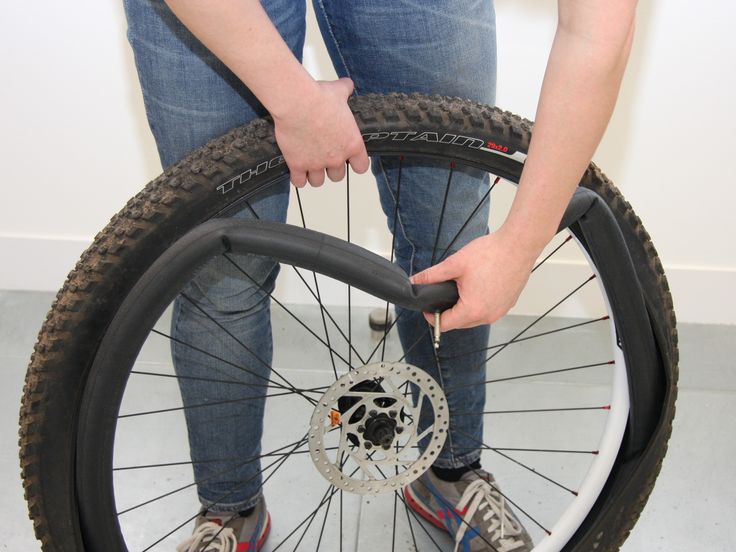 After that, the popularity changed again, the 27.5" bicycle wheel size appeared.
After that, the popularity changed again, the 27.5" bicycle wheel size appeared.
The new bicycle standard became popular, it was a compromise between bikes for tall, stocky cyclists and those cyclists who weren't tall but wanted more speed. The 27.5" size was used for mountain bikes in the MTB class. And the inner diameter of the wheel was 584 mm, which was the same as the old French size 650B.
The French designated tires (as an example 700X35C) with an approximate value, and the first digit means an outer diameter of 700 mm, and a tire width of 35 mm. The letter in French notation meant the value of the inner diameter. And in this example (as an example 700X35C). But this is not used in the designation for mountain bikes.
In the table below, you can find out more about the values of bicycle tire sizes. This table will help you find out the size of a bicycle tire.
 sportek.in.ua
sportek.in.ua Nikolaev bicycle shop "Sportek"
Published: 04/07/2017
Edited: 07/15/2018
From time to time the question arises: “What is the diameter of the bicycle wheels?”
Most often, it pops up if a tire has broken through or new tires are needed on the wheel of an old bicycle. And to the seller’s question “What wheel does your bike have?” Only one answer comes to mind: “round”.
First of all, you need to define the concept of wheel diameter .
For most ordinary people, this is the diameter of the wheel at the outer (outer) border of the tire.
But there is also the concept of rim fit size - this is the diameter of the rim or tire itself along the inner border.
Therefore, it would be a good idea to first understand the tire labeling systems adopted in the world in order to speak the same language with the seller of the bike shop. You can read about this in the article "Bicycle tires: sizes, marking types and interchangeability" on our website.
You can read about this in the article "Bicycle tires: sizes, marking types and interchangeability" on our website.
For the sake of brevity, here is a figure explaining what is measured in each labeling system. Therefore, it is important to understand what we measure and what we want to find.
When choosing a new rubber, be guided by it. If there is no tire with exactly the same marking, look at the interchangeability table and select the right size in another marking.
If a new tire is needed a little wider or narrower, check the tire and rim width chart.
If in doubt, talk to the salesperson. He will tell you if it is right for you, both in terms of size, tread, riding style and what kind of roads you want to ride.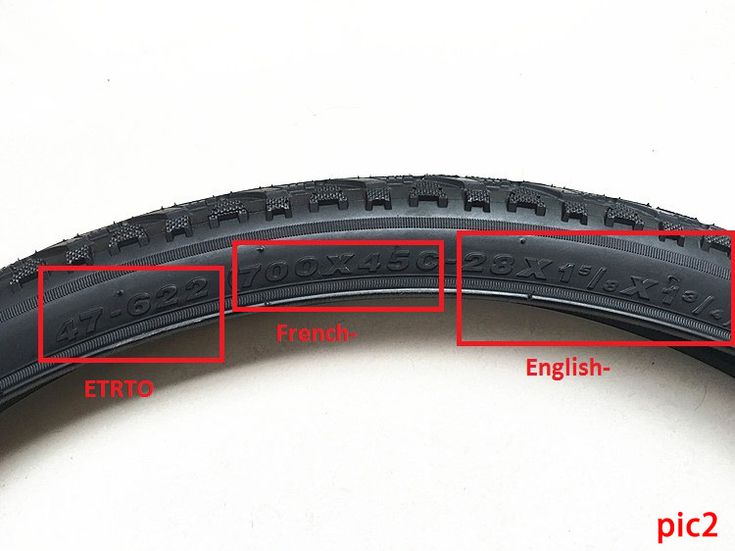
This can be done by measuring the radius and multiplying it by two.
For younger students reading this article, I remind you that one diameter consists of two radii.
Only you need to measure strictly from the center of the sleeve, and not from its edges. When measuring, the bike should stand vertically, and the tape measure, putting one end to the ground, keep the same strictly vertically, and not along the spokes of the wheel . Only such a measurement will give the correct value.
The wheel diameter itself can be measured in the same way.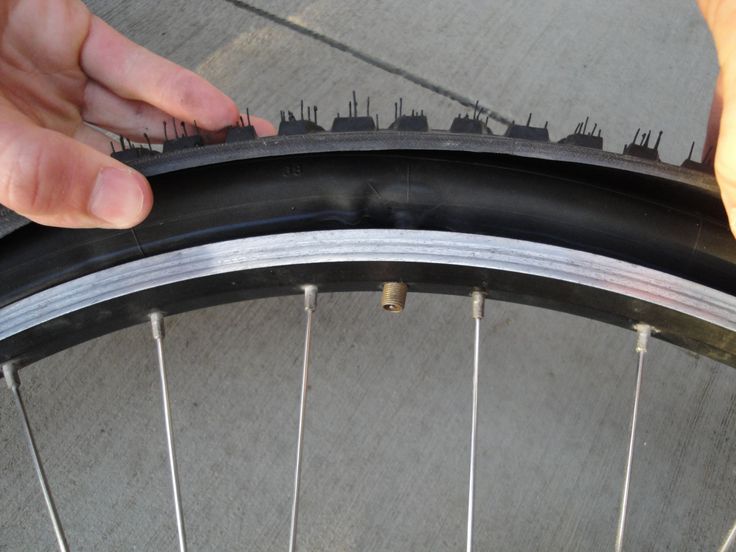 The main thing is to accurately determine its upper cut. To do this, you can take a level and attach it to the top of the tire, and, holding it strictly horizontally, determine the desired size from the tape measure.
The main thing is to accurately determine its upper cut. To do this, you can take a level and attach it to the top of the tire, and, holding it strictly horizontally, determine the desired size from the tape measure.
After that, we convert it from mm to inches. To do this, divide it by 25.4 (1 inch = 25.4 mm) and calculate the size in inches. The result can be rounded up to standard inch wheel sizes.
For example, if the measurement is 720 mm, divide by 25.4 to get 28.346 inches. So, most likely, the actual size of the wheel, taking into account the accuracy of the calculations, is 28”.
In principle, the rim diameter can also be measured in the same way.
Just pay attention to the difference between what is measured on the outside of the tape measure and the fit size of the rim.
